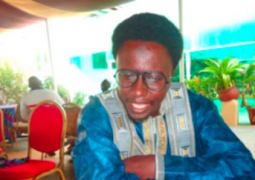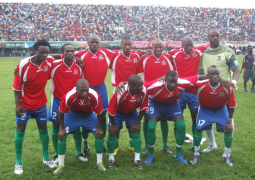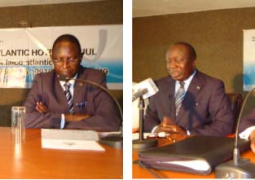This article and others to follow is geared towards discovering the facts surrounding disability and why we need to accept PWD integrate them, give them their rights and equal opportunities in our societies.
It seeks to raise the awareness of the general public about the rights of the People With Disabilities and other disabilities issues and also to demystify the concept that people are having about disability and put to light the right scenarios on disability. It is also gearing toward creating a conducive environment that is fit for all including PWD here in the
Concept and definition of disability
Local notions of disability used to be synonymous with aging. Weak, eyesight, aching joints hard of hearing and to a certain extent mental retardness were mostly associated with the aged. The disable as we define them now, were spell bound persons who were largely regarded as cause and not a predisposition ordained by eternity. These socio-cultural stereotyping are still prevalent; particularly in developing countries. It is perhaps because of some of these believes that made obtaining disability data somewhat difficult.
The world programme of Action for Disable Persons and the standard =Rules on the Equalization of Opportunities for Persons With Disabilities emphases that disability is social created problem and not an attribute of an individual. Disablement results from a dynamic interaction between health conditions and other factors ( such as age sex and personality level of education) on the one hand and social and physical environment al factor on the other hand . it, therefore, is important to distinguish between impairment ,m disability and handicap.
Disability in The
(16/1000 from 1998 National Disability Survey and 28/1000 from the 2003 National population Census), the number of PWDs in The Gambia would be approximately 33,000
The magnitude of disability is a growing phenomenon in the
Physical mobility related disability constituted the highest national prevalence rate of 3.6 per 1000 population. The urban and rural prevalence rates were 12.5 and 17.6 per 1000 population respectively.
1,310 (31%) out of the 4,253 Persons with Disabilities enumerated in the 1998 National Disability Survey were children between 2-18 years of age. The main disability problem of these children was difficulty in speech which constituted 18.4%. Visual impairment and hard of hearing were also reported among children but were not as high as speech difficulties. In any case, all the mentioned types of disabilities among children could negatively influence their educational opportunities if special services are not available to them. In 2003 population and housing census, visual impairment had the highest prevalence rate of 1.1 per hundred. This was followed in second place by physical impairment (0.6 per 100) and third by hearing impairment (0.4 per 100).
The Concept of Persons With Disabilities:
There are several concepts associated with Persons With Disabilities. They include the following:
Impairment:
Impairment is a physical, intellectual, mental or sensory characteristic or condition, which places limitations on an individual’s personal or social functioning in comparison with someone who does not have that characteristic or condition.
Disability:
Disability summarizes a great number of different functional limitations occurring in any population. People may be disabled by physical, intellectual or sensory impairment, medical conditions or mental illness. Such impairments, conditions or illnesses may be permanent or transitory in nature.
Handicap:
The loss or limitation of opportunities to take part in the community on an equal level with others it describes the encounter between the Person With Disability and the environment.
Special Needs:
These are conditions or factors that hinder normal learning and development of individuals.
The hindrance is a life-long condition that does not allow proper progress of an individual because of factors like disabilities, social, emotional, economic, health and other conditions.
These conditions are also referred to as barriers to learning and development. The barriers can be environmental, congenital or both.
Assistive Device:
Technical Aids and appliances that are designed, fabricated or adopted to assist a Person With Disability in performing a particular task e.g. Calipers, Wheelchairs, Hearing aid and White canes.
Discrimination:
Treating people differently (Usually bad manner because of their class, race, disability, or gender) instead of who they are as individuals.
Why should we not discriminate?
Since no one want to be discriminated in the society you live being a person with disability or not, it is because of the same reason why we should not discriminate people with disabilities in our societies.
People With Disabilities are part of our society and they, they are brothers and sisters, our children and even our parents in our homes equally and it is certain that no one want to see your parent or child with a disability been deprived of her or his rights in the society he/she live because of her situation.
People With Disabilities also contribute to our national development. How did they contribute? They contribute in the choosing of representative to formulate laws and policies that the country will use as guide line for kind of national development strategy they want to implement.
They contribute through working and paying taxes, and they also contribute by producing families, members whom can be genuine contributors to national development.




